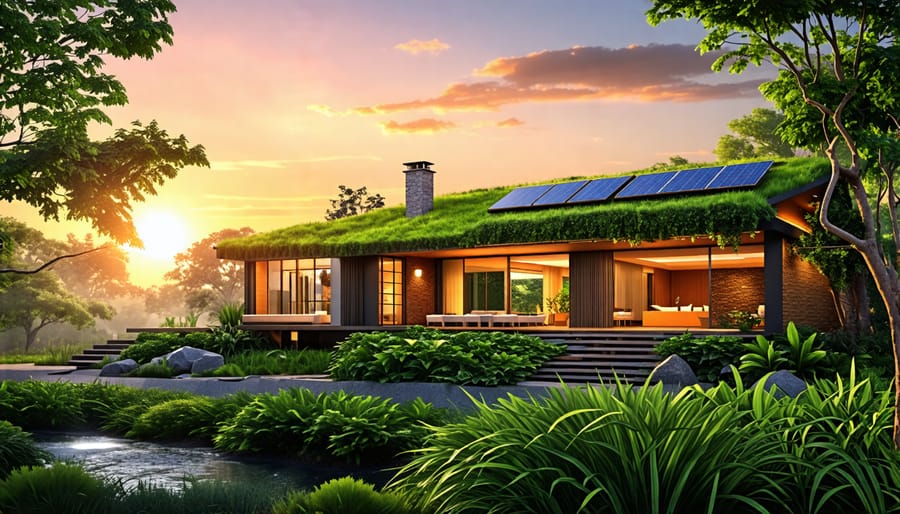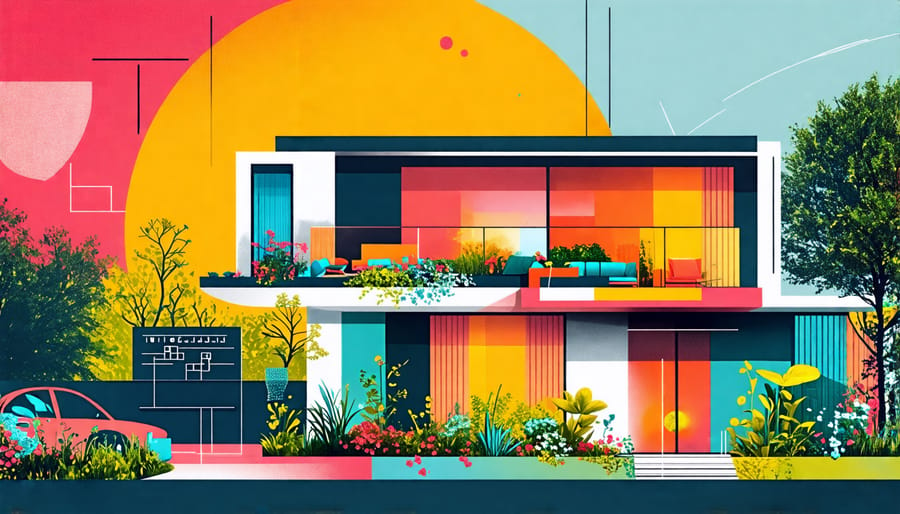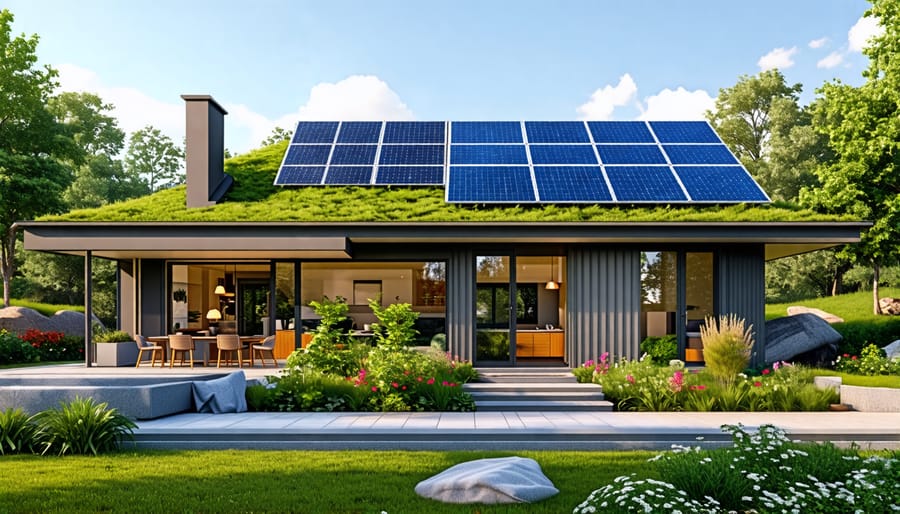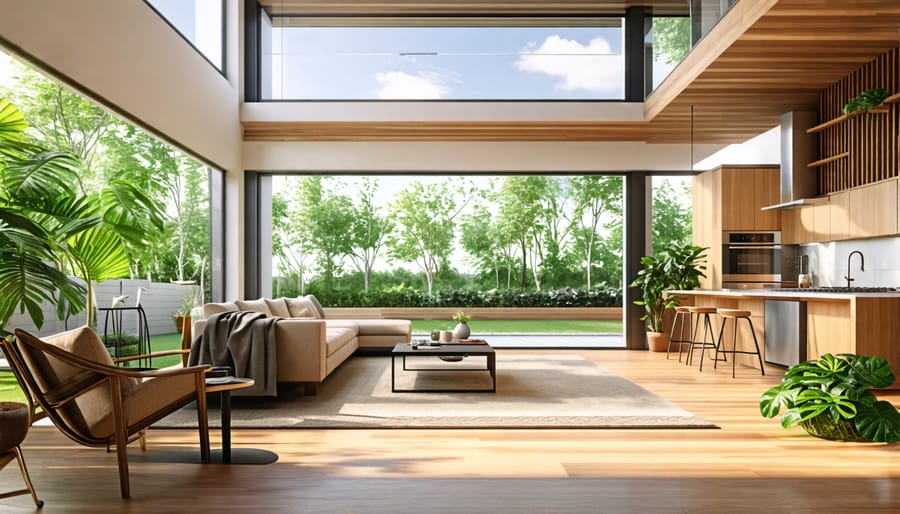
10 Stunning Sustainable Houses That Will Inspire Your Dream Home
Revolutionizing residential architecture, sustainable homes harmonize with nature, minimize environmental impact, and nurture occupant wellbeing. By integrating eco-friendly materials, energy-efficient technologies, and biophilic design principles, these innovative dwellings demonstrate that sustainability and style can coexist beautifully. From passive solar orientation to green roofs and sustainable interior design, forward-thinking architects are crafting homes that tread lightly on the Earth while elevating quality of life. As the sustainable architecture movement gains momentum, these groundbreaking residences serve as inspiring blueprints for a greener, more resilient future. By showcasing the limitless possibilities of sustainable living, they empower homeowners to embrace eco-conscious design and contribute to a healthier planet, one dwelling at a time. In this article, we’ll explore the key principles, materials, and technologies shaping sustainable house design, along with stunning real-world examples that bring this transformative approach to life.

Key Principles of Sustainable House Design
Energy Efficiency
Energy efficiency is a key component of sustainable architecture. Passive solar design harnesses the sun’s natural energy to reduce heating and cooling needs. Strategically placed windows allow sunlight to warm the home in winter, while overhangs provide shade in summer. High-performance windows with low-E coatings and insulated frames minimize heat transfer, keeping interiors comfortable year-round. Proper insulation in walls, attics, and foundations further reduces energy loss. Smart energy saving solutions like programmable thermostats, energy-efficient appliances, and LED lighting can dramatically lower utility bills. Efficient HVAC systems, such as heat pumps or geothermal systems, provide eco-friendly heating and cooling. By incorporating these energy-efficient features, a sustainable home minimizes its environmental impact while providing a comfortable living space. With careful planning and the right materials, you can create a beautiful, energy-saving haven that’s easy on both the planet and your wallet. Whether you’re building from scratch or renovating an existing home, prioritizing energy efficiency is a smart investment in your future and the well-being of generations to come.
Renewable Energy Integration
Sustainable homes often incorporate renewable energy systems to reduce reliance on fossil fuels and minimize environmental impact. Solar panels are a popular choice, converting sunlight into clean electricity. They can be mounted on the roof or ground, and excess energy can even be sold back to the grid. Geothermal systems harness the earth’s constant temperature for efficient heating and cooling, using underground pipes filled with liquid. Wind power is another option, with small-scale turbines generating electricity in windy locations. These systems can work together, with solar providing daytime energy and wind at night. Smart home technology helps manage and optimize energy use. Government incentives and falling prices make renewable energy an increasingly attractive investment for eco-conscious homeowners. Integrating renewables not only shrinks a home’s carbon footprint but can lead to significant long-term savings on utility bills. With proper planning and professional installation, sustainable energy systems are a key feature of any truly green home.
Sustainable Materials
Sustainable architecture houses prioritize the use of recycled, locally-sourced, renewable, and non-toxic building materials to minimize their environmental impact. Recycled materials, such as reclaimed wood, recycled steel, and repurposed glass, reduce waste and conserve natural resources. Locally-sourced materials minimize transportation emissions and support the local economy. Renewable materials, like bamboo, cork, and straw bales, are rapidly replenishable and biodegradable. Non-toxic materials, including low-VOC paints, natural fibers, and formaldehyde-free adhesives, ensure a healthy indoor environment. These sustainable materials can be beautifully incorporated into a home’s design, from structural elements to finishes and green design furniture. By carefully selecting building materials, homeowners can create a stylish, comfortable, and eco-friendly living space that reflects their values and contributes to a more sustainable future. As the demand for sustainable architecture grows, an increasing variety of innovative and attractive material options are becoming available, making it easier than ever to build a home that is both environmentally responsible and visually appealing.
Water Conservation
Water conservation is a key aspect of sustainable architecture. Rainwater harvesting systems collect and store rainwater from roofs, which can then be used for irrigation, flushing toilets, and washing clothes. This reduces the demand on municipal water supplies and helps conserve this precious resource. Graywater recycling involves reusing water from sinks, showers, and washing machines for irrigation or flushing toilets, further reducing water consumption. Low-flow fixtures, such as faucets, showerheads, and toilets, are designed to use less water while still providing adequate performance. By incorporating these water-saving measures into a sustainable home design, homeowners can significantly reduce their water footprint and contribute to a more sustainable future. When planning a sustainable home, consider integrating rainwater harvesting, graywater recycling, and low-flow fixtures to maximize water efficiency and minimize waste.
10 Inspiring Examples of Sustainable Houses
Here are 10 inspiring examples of sustainable houses from around the world that beautifully integrate eco-friendly design principles and innovative green technologies:
1. Halo House (Bali, Indonesia): This stunning bamboo home features a unique spiral design that maximizes natural ventilation and lighting. Solar panels, rainwater harvesting, and greywater recycling make it highly self-sufficient.
2. Earthship Biotecture (Taos, New Mexico): Built with recycled materials like tires and bottles, Earthships maintain comfortable temperatures year-round without relying on fossil fuels. Integrated greenhouses provide food, while solar and wind power the home.
3. Zero Energy House (Seoul, South Korea): Sleek solar panel arrays and building-integrated wind turbines enable this modern urban home to produce as much energy as it consumes over the course of a year. A green roof provides insulation and absorbs rainwater.
4. Sustainability Treehouse (Hershey, Pennsylvania): Towering amidst the forest canopy, this environmental education center is constructed with FSC-certified wood and features a 30-foot tall recycled water collection cistern. Photovoltaic panels and two wind turbines supply its power.
5. Lifehaus (Darmstadt, Germany): Prefabricated modules intricately interlock in this Passive House certified home, which requires minimal energy for heating and cooling thanks to superior insulation, an airtight envelope, and a heat recovery ventilation system. Renewable energy covers its remaining needs.
6. Illawarra Flame House (Wollongong, Australia): This net-zero energy home retrofit tastefully incorporates solar panels, evacuated tube collectors for hot water, phase change materials for thermal mass, and an innovative HVAC system to drastically slash energy use.
7. Bosco Verticale (Milan, Italy): Two residential high-rises host over 900 trees and thousands of shrubs on their balconies, creating a vertical forest that absorbs CO2, filters pollution, and provides shade to reduce cooling needs. Greywater and rainwater irrigate the greenery.
8. Casa Iseami (Costa Rica): Immersed in the jungle, this open-air home was built on stilts using teak sustainably harvested on-site. The positioning and design maximize passive cooling while protecting against moisture. Solar supplies all its electricity needs.
9. ZEB Pilot House (Larvik, Norway): This plus-energy home actually produces surplus clean power annually with a vast 150 m2 solar array. Recycled wood, an extremely airtight envelope, geoexchange system, and smart home automation make it a marvel of sustainable engineering.
10. Blooming Bamboo (Ha Tinh, Vietnam): Low-cost but resilient, this modular bamboo dwelling was created to house victims of extreme flooding. The stilted design resists floodwaters, while the locally-sourced bamboo is treated to withstand termites and mold. Natural ventilation keeps it cool and comfortable.
These diverse examples from across the globe demonstrate the incredible potential of sustainable architecture to create beautiful, high-performance homes that dramatically reduce environmental impacts. While each takes a unique approach, they all combine renewable energy, water conservation, passive design, and low-impact materials to bring green living to stunning reality.

Conclusion
In conclusion, sustainable residential architecture offers numerous benefits for homeowners, the environment, and future generations. By incorporating eco-friendly materials, energy-efficient systems, and smart design principles, sustainable homes minimize their carbon footprint, reduce waste, and create healthier living spaces. Not only do these practices contribute to a greener planet, but they also result in long-term cost savings on utility bills and maintenance. As you embark on your own home building or remodeling journey, we encourage you to prioritize sustainability. Every sustainable choice, no matter how small, makes a positive impact. By embracing sustainable architecture, you’ll be creating a home that is both beautiful and responsible, setting an example for others to follow. Together, we can build a more sustainable future, one home at a time.

